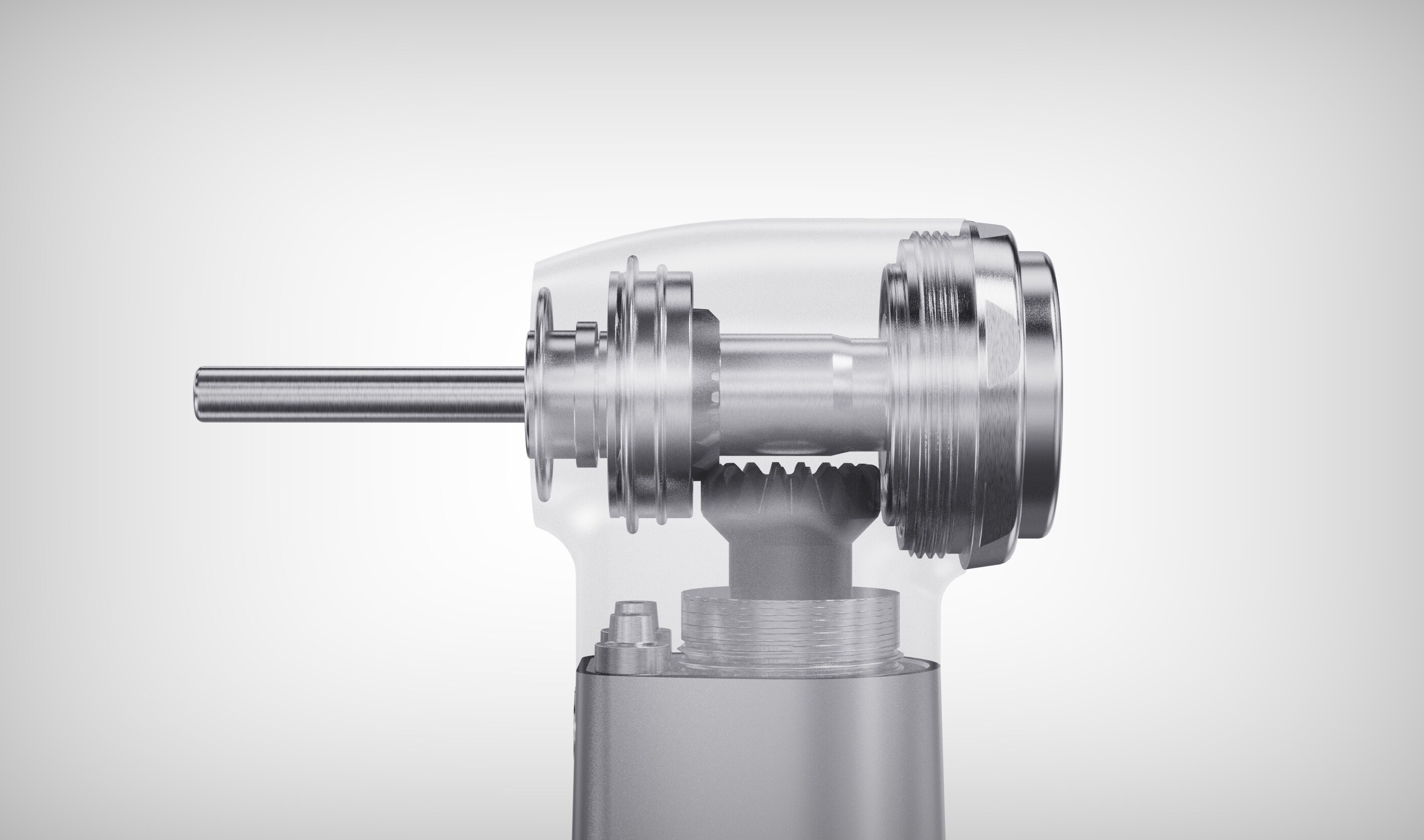El. pašto formato klaida
emailCannotEmpty
emailDoesExist
pwdLetterLimtTip
inconsistentPwd
pwdLetterLimtTip
inconsistentPwd

News

Pneumatic v.s. Electric, Know Their Difference
Dental handpieces, such as contra-angle handpieces and turbo handpieces, are today seen as more than just "commodities". However, as will be made clear to you below, this view is not enough. The dental handpiece is the dentist's most important tool and an essential part of the modern dental practice.
Pneumatic v.s. Electric

There are two systems for driving the bur: the pneumatic system and the electric system. In pneumatic systems, turbines and air motors are designed differently.
For the turbine, the rotor drives the bur directly. The impeller of the rotor is driven by compressed gas. The idling speed of the turbine can be up to 400,000 rpm. The actual working speed depends on the applied force and is about half of the idle speed, which is about 150,000 to 250,000 rpm. The maximum power achievable in its rev range is 10-26 watts.
On the other hand, the air motor drives the bur indirectly through a curved handpiece or a straight handpiece. The maximum speed that the air motor can achieve is 25,000 rpm. There are contra-angles with different speed-up and speed-down ratios. Therefore, a contra-angle handpiece with an air motor with a 2:1 reduction ratio can achieve a rotational speed of about 12,500 rpm.
The electric motor has an idle speed of up to 40,000 rpm. For a 1:5 speed-up contra-angle handpiece, the corresponding bur rotates at 200,000 rpm. The maximum power is over 60 watts and the torque is about 3Ncm. This means that the electric contra-angle does not slow down or stop when the bur cuts through different dental tissues or orthopedic materials.
The phone maintains an almost constant RPM, with or without load. The bur of the contra-angle handpiece runs more stably than the turbo handpiece. Angled hand burs have less vibration than turbo hand burs. The increased stability means that preparations work with greater precision, at faster speeds and with less heat on the tooth tissue.
The continuous development
The trend towards electric motors started in Europe. An important reason is the cost of installing new pneumatic lines in existing buildings. There is also an obvious reason that electric drives are not only simpler to install, but also more efficient to use.
Decades later, electric motors are very popular in both Europe and Asia. Technological innovations in design, materials, torque and lighting are also making electric motors increasingly popular in North America today. Electric motors make the work of dental clinics easier and faster.
To sum up
We are a professional manufacturer, more questions, please feel free to contact us.

